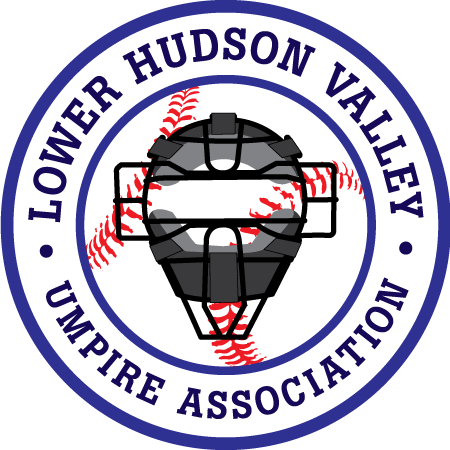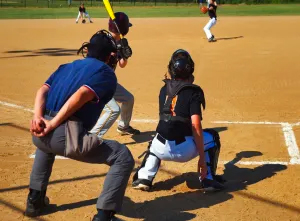By Ken Enderley
Retransmitted courtesy of bobtheumpire.com
The journey to becoming a paid/professional umpire usually starts at the Little League level. When you registered your kid or kids, and they were ‘drafted’ or put on a team (T-Ball up to Seniors), you were asked by the team manager to volunteer to umpire games in other divisions within your Little League.
The Little League that my kids played in didn’t have an umpire uniform per se. A navy blue umpire shirt with the respective LL logo was embroidered on the pocket. The shirt was two or three sizes larger, shin guards, mask, and a balloon chest protector (old AL umpire look) were provided. An indicator came in handy when the scoreboard was not working on the backfields of the LL complex.
THE VOLUNTEER UMPIRE PERSPECTIVE
Most parents would not volunteer to umpire, let alone coach or manage a team. Especially a team with their kids on it. So those of us who have stepped up to take on these endeavors thank the rest of you who have. You learn fast who your friends are when you take on umpiring and/or coaching. The snack bar parents never hear anything negative, other than possibly, the fries are greasy or hot dogs are cold.
CHIRPS HEARD AROUND THE LL WORLD
Chirping is not only reserved for a special species of birds, but for humans as well. There are signs at most LL fields that the “Umpires are volunteers, so respect them.” Hah! Umpire manuals state that you should not have ‘rabbit ears.’ Sure, but we can still laugh (internally, of course) at some of the comments you hear. Such as:
“Blue, that was a strike?”
“Hey blue, change the channel, you’re missing a good game!”
“Where was it blue?”
My new favorite is, “Blue, the batter shrugged their shoulder, that’s a swing!” Yes, a coach did say that during a championship 9U baseball game. Oh Boy!
FORGETTING THE PRE-GAME CONFERENCE AND SAFETY RULES
Obviously most managers forget what was said at your pre-game conference. It is amazing that when walking back to the dugout your initial instructions and warnings are ignored. When I coached, I made sure that my team and my other coaches knew the ground rules and the umpire’s warnings.
“Are your players properly equipped?”
“Yes.”
“Does the catcher have a dangling throat guard?”
“I didn’t know they needed one.”
“Well they can’t catch without one.”
RESPECT GOES BOTH WAYS
Respect is often earned when you show respect to others. For some reason, the respect on the diamond sometimes does not go both ways. As Little League umpires, you are still held to a higher standard. You are supposed to know the rules, but your judgement calls — out or safe, strike or ball, fair or foul — are scrutinized constantly, it seems. When the manager exits the dugout, they are supposed to call ‘time’ before exiting. You take your mask off, and in a calm and professional manner, speak with them. Nip it in the bud before it gets out of hand. “Coach, we went over this in our pre-game. No arguing strikes or balls, out or safe calls!” There is no guarantee that this will earn you that manager’s or coach’s respect, but it is a good start.
THE FINAL OUT
When the final out is called by you, the volunteer Little League umpire, you can expect a few things from the participants. A “Good game, Blue” is always cool. You may hear that from both managers or just from either the winning or sometimes the losing manager. Weird right? Players may extend a compliment as well. Take those and run with them. The flip side is that you may get an earful from the losing coach or a player (not rare) making a comment about your called strike three!
No matter what, keep your head up, because you did something good and hopefully you will continue to do so. As you gain more confidence in your skills, you can then take the next step in your journey and become a paid/professional umpire. However, no matter how far you get, you’ll always hear, at some point, “WHERE WAS IT BLUE?”
Ken Enderley began umpiring when he was thirteen years old. He’s been a volunteer LL umpire, since 2001, in Rockland County, NY and joined the Rockland ASA chapter in 2006. His continuing knowledge of baseball and softball rules as well as umpire mechanics has enabled him to teach both adult and youth umpires. Ken is currently Co-Director of the Lower Hudson Valley Umpire Association. You can follow them on Instagram at lhvua.

